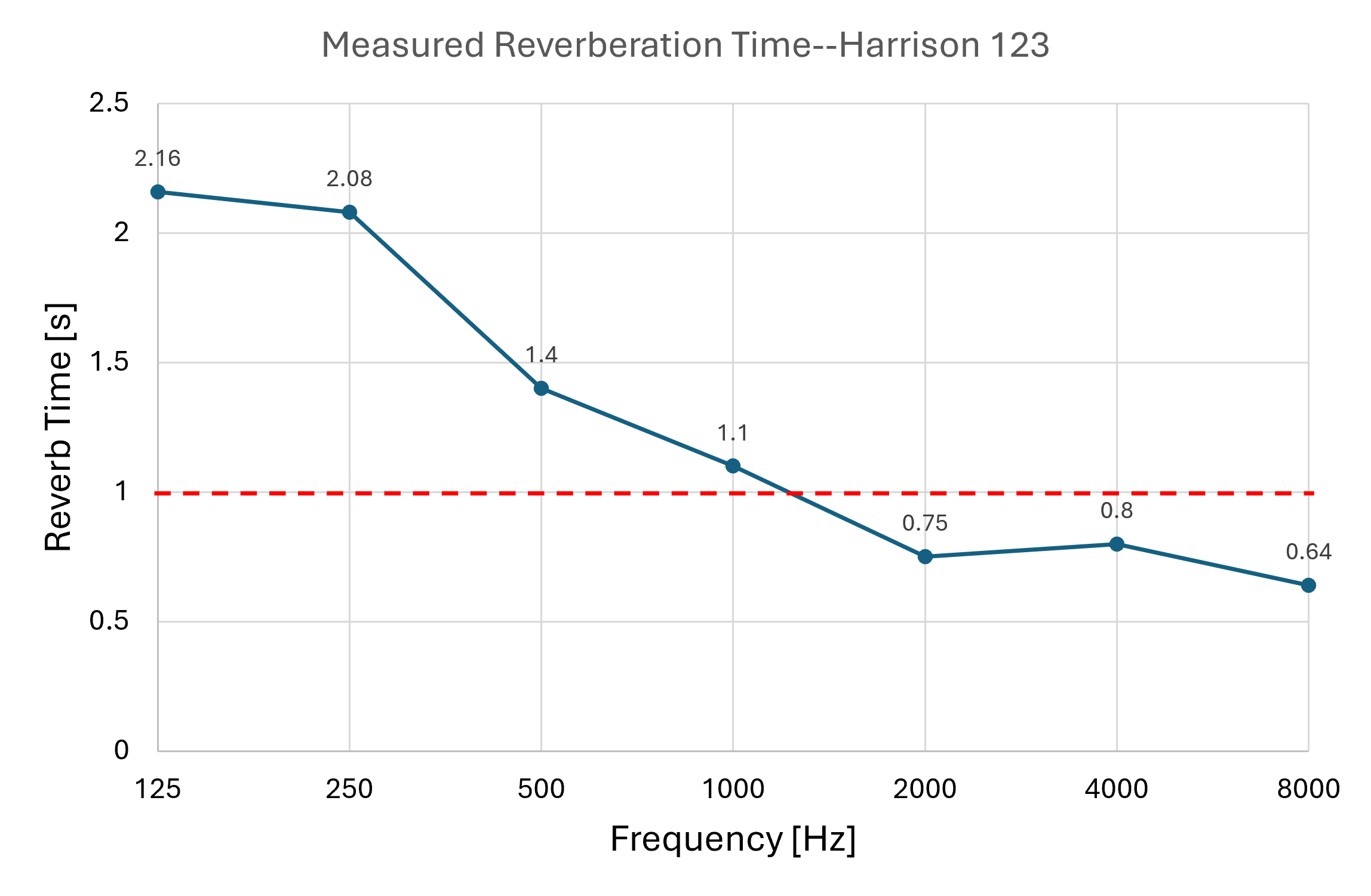Harrison 123 Reverberation
Harrison 123 originally had very poor speech intelligibility when renovated due to acoustical echoes and reverberation.
A set of wall-mounted sound absorbers (fabric-covered fiberglass, about 1-2" thick) were installed several years ago, which helped somewhat at frequencies above 500 Hz. Nevertheless, users of the room report significant difficulty understanding spoken word, especially when attempting to have a conversation involving multiple participants.
The background sound level in the room is quite low, with just some noticeable noise from the air handling system and the four ceiling-mounted digital projectors, but the intelligibility of spoken word is not good.
Measurements of the reverberation time in Harrison 123 show excessive low-frequency reverberation:

For a moderately large classroom intended for live oral discussion, the reverb time would ideally be about 1 second for frequencies in the vocal range down to 250 Hz. As can be observed from the measurements, the reverb time for frequencies below 1000 Hz is too long. The measured reverb times of 2 seconds at low frequencies gives a "boomy" quality to spoken words.
Example 1: Playback of spoken sentences recorded in Harrison 123
Example 2: Playback of rhyming words recorded in Harrison 123
Thus, it is necessary to find a way to reduce the low frequency reverberation time in the room. If the reverb time can be adjusted to be approximately 1 second, the predicted spoken word audibility is simulated:
Example 1 simulation: spoken sentences
Example 2 simulation: spoken rhyming words
Low frequency absorption in rooms is typically accomplished with perforated panel absorbers or similar flexible panel structures. We need to discuss options to deal with the acoustical challenges.
